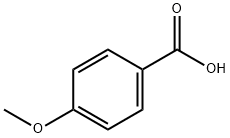p-Anisic acid: metabolism and activities
Jul 25,2023
General Description
p-Anisic acid, derived from ani-seed, has multiple activities and potential applications. It acts as a tyrosinase inhibitor, effectively inhibiting the oxidation and hydroxylation reactions catalyzed by the enzyme. p-Anisic acid also exhibits antidiabetic activity by modulating insulin secretion and calcium mobilization in pancreatic cells without compromising cell viability. Additionally, it possesses antihemorrhagic properties, inhibiting platelet aggregation and clotting by suppressing receptor signaling pathways and interfering with thrombin activity. This natural compound is used to treat and prevent bleeding disorders such as epistaxis, oral ulcers, and gastric ulcers. p-Anisic acid shows promise for further research and application development due to its various beneficial effects.
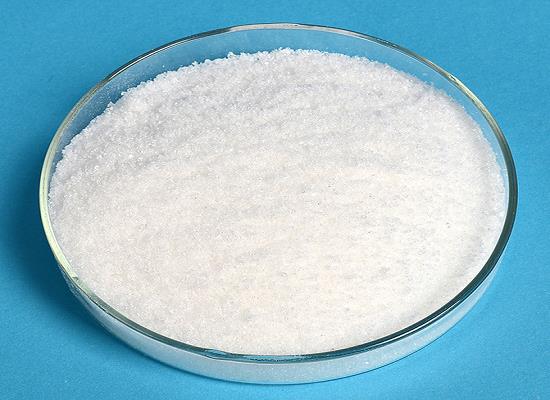
Figure 1. Tablets of p-anisic acid
Metabolism
Based on the analysis of urine samples in rats treated with p-anisic acid, it was observed that p-anisic acid and pHBA are the two main compounds detected. Thin-layer chromatography (TLC) revealed distinct UV-absorbing spots, with p-anisic acid showing a negative response and pHBA displaying a positive response upon phenol-detecting reagent spraying. Further investigation using UV absorption spectra confirmed that p-anisic acid and pHBA were indeed present. It was concluded that pHBA is the primary metabolite resulting from the oxidative metabolism of p-anisic acid in rats. To quantify how p-anisic acid and its metabolites are excreted in rat urine, a 24-hour study was conducted after intraperitoneal injection. Approximately 85.7% of the administered dose of p-anisic acid was accounted for. Among the excreted compounds, nearly 80% existed in different forms of p-anisic acid. The majority (58%) of this amount was conjugated with glucuronic acid, 15.5% was excreted as the glycine conjugate, and the remaining portion was in the free form. Only a small proportion of p-anisic acid (6.2%) underwent metabolism to form pHBA. The main metabolized fraction of pHBA was primarily excreted as its glucuronide conjugate, while the rest was predominantly found in its free form. In summary, p-anisic acid undergoes extensive conjugation with glucuronic acid and glycine in rats. The primary metabolic product is pHBA, which is excreted primarily as its glucuronide conjugate or in its free form. 1
Activities
Inhibition of tyrosinase
p-Anisic acid, derived from ani-seed, has been identified as a tyrosinase inhibitor. It effectively inhibits the oxidation of L-DOPA catalyzed by tyrosinase, with an IC50 value of 0.60 mM. The inhibition is reversible, allowing for residual enzyme activity. p-Anisic acid acts as a classical noncompetitive inhibitor, demonstrated by an inhibition constant K(I) of 0.603 mM. Additionally, it inhibits the hydroxylation of L-tyrosine by tyrosinase. This leads to a prolonged lag phase and reduced steady-state activity of the enzyme. Overall, p-anisic acid demonstrates significant activity as a tyrosinase inhibitor, making it a promising candidate for further research and potential applications. 2
Antidiabetic activity
The combination of O-methyl derivatives of phenolic acids and phospholipids, specifically LPC with covalently bonded p-anisic acid, has exhibited promising potential as an insulin secretion modulator. In this study, it was found to improve glucose-stimulated insulin secretion (GSIS) and intracellular calcium mobilization in MIN6 β pancreatic cell line. Importantly, the compound 1-anisoyl-2-hydroxy-sn-glycero-3-phosphocholine showed no negative effects on cell viability, suggesting its potential safety for use. Additionally, this LPC derivative was shown to target G protein coupled receptors, including GPR40, GPR55, and GPR119. These findings contribute to the understanding of anisic acid's activity as a potential antidiabetic agent. 3
Antihemorrhagic activity
p-Anisic acid is a natural compound with antihemorrhagic activity. It exerts its hemostatic effect by inhibiting platelet aggregation and the coagulation pathway. Research has shown that p-anisic acid can effectively inhibit platelet aggregation by suppressing the arachidonic acid receptor signaling pathway on platelet surfaces. Moreover, it can slow down plasma clotting by binding to fibrinogen and inhibiting the activity of thrombin. In clinical applications, p-anisic acid has been widely used for the treatment and prevention of various bleeding disorders such as epistaxis, oral ulcers, and gastric ulcers. It provides rapid hemostasis with a low risk of side effects and has gained popularity among patients. 4
Reference
1. Cramer MB, Michael WR. Metabolism of p-anisic acid by the rat. Life Sci II, 1971, 10(21):1255-1259.
2. Kubo I, Chen QX, Nihei K, Calderón JS, Céspedes CL. Tyrosinase inhibition kinetics of anisic acid. Z Naturforsch C J Biosci, 2003, 58(9-10):713-718.
3. Drzazga A, Okulus M, Rychlicka M, Biegała Ł, Gliszczyńska A, Gendaszewska-Darmach E. Lysophosphatidylcholine Containing Anisic Acid Is Able to Stimulate Insulin Secretion Targeting G Protein Coupled Receptors. Nutrients, 2020, 12(4):1173.
4. Uma B, Veerabasappa Gowda T. Molecular mechanism of lung hemorrhage induction by VRV-PL-VIIIa from Russell's viper (Vipera russelli) venom. Toxicon, 2000, 38(8):1129-1147.
- Related articles
- Related Qustion
- The application of p-Anisic acid Mar 2, 2020
Anisic acid or methoxybenzoic acid is an organic compound which is a carboxylic acid. P-Anisic acid, known also as 4-methoxybenzoic acid or Draconic acid, which is a methoxybenzoic acid.
- 4-Methoxybenzoic acid – a phenolic acid with low toxicity Dec 26, 2019
4-Methoxybenzoic acid, also known as p-anisic acid, 4-anisate or draconic acid, belongs to the class of organic compounds known as p-methoxybenzoic acids and derivatives. These are benzoic acids in which the hydrogen atom at position C-4 of
Abemaciclib inhibits CDK4/6, blocks cell cycle progression, induces senescence and apoptosis in cancer cells.....
Jul 24,2023APIProcaine hydrochloride, a local anesthetic, can inhibit nerve impulse transmission and modulate sodium channels. Used in surgery, dermatology, diagnostics, cardiovascular procedures.....
Jul 25,2023API4-Methoxybenzoic acid
100-09-4You may like
4-Methoxybenzoic acid manufacturers
- Anisic acid
-
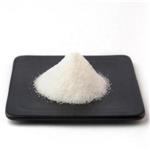
- $1.00 / 1kg
- 2024-04-30
- CAS:100-09-4
- Min. Order: 1kg
- Purity: 99%
- Supply Ability: 10 ton
- 4-Methoxybenzoic acid
-
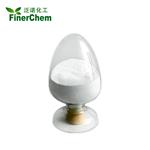
- $2.00 / 25KG
- 2024-04-30
- CAS:100-09-4
- Min. Order: 1KG
- Purity: ≥99.5%
- Supply Ability: 500mt/year
- p-Anisic acid
-
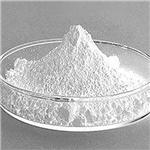
- $0.00 / 1G
- 2024-04-30
- CAS:100-09-4
- Min. Order: 1G
- Purity: 99%
- Supply Ability: 20




